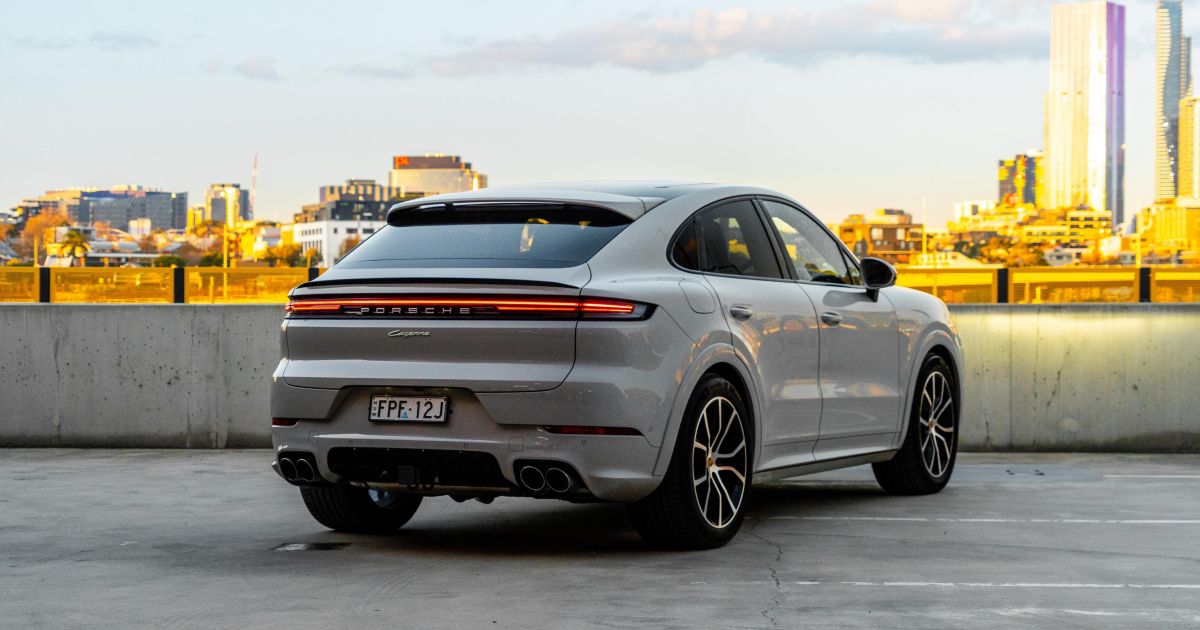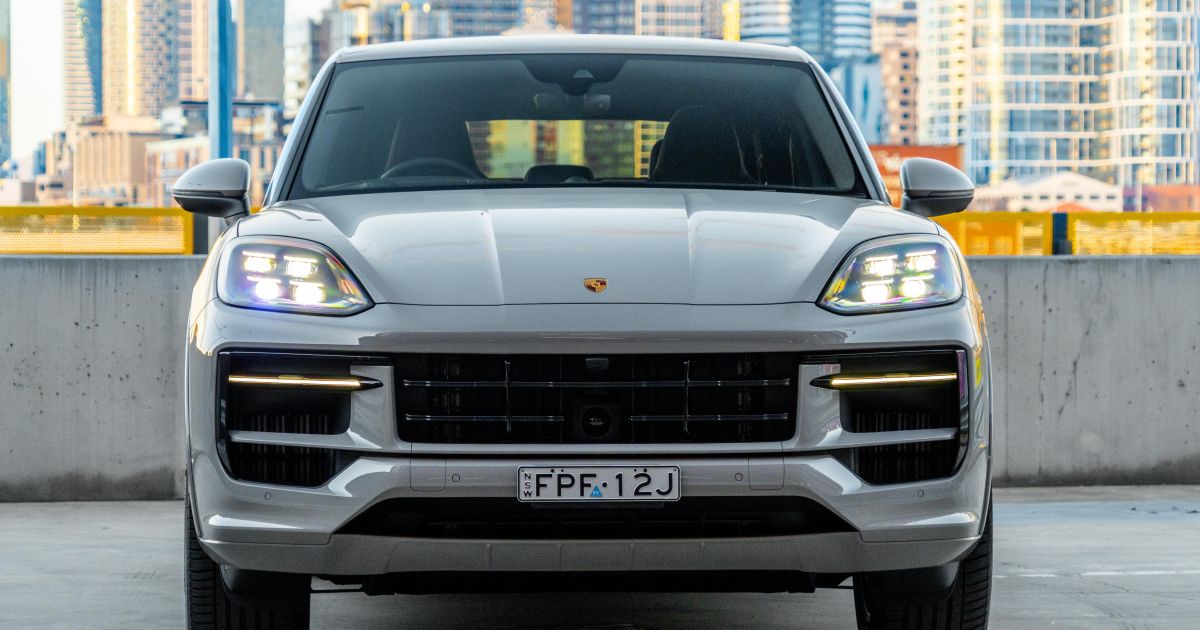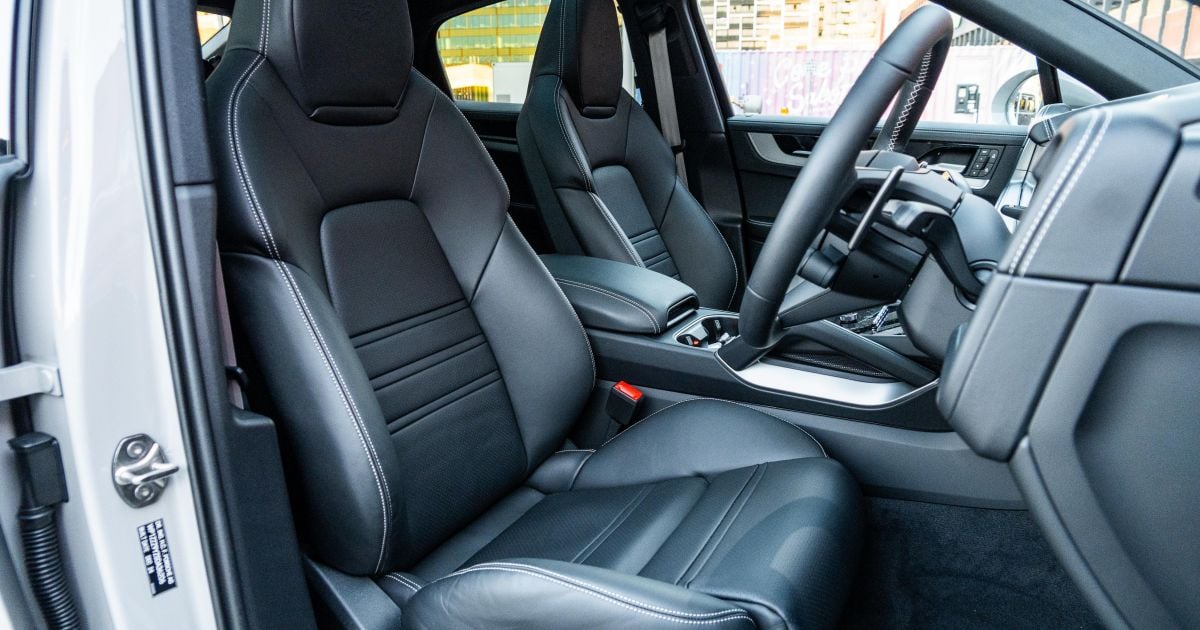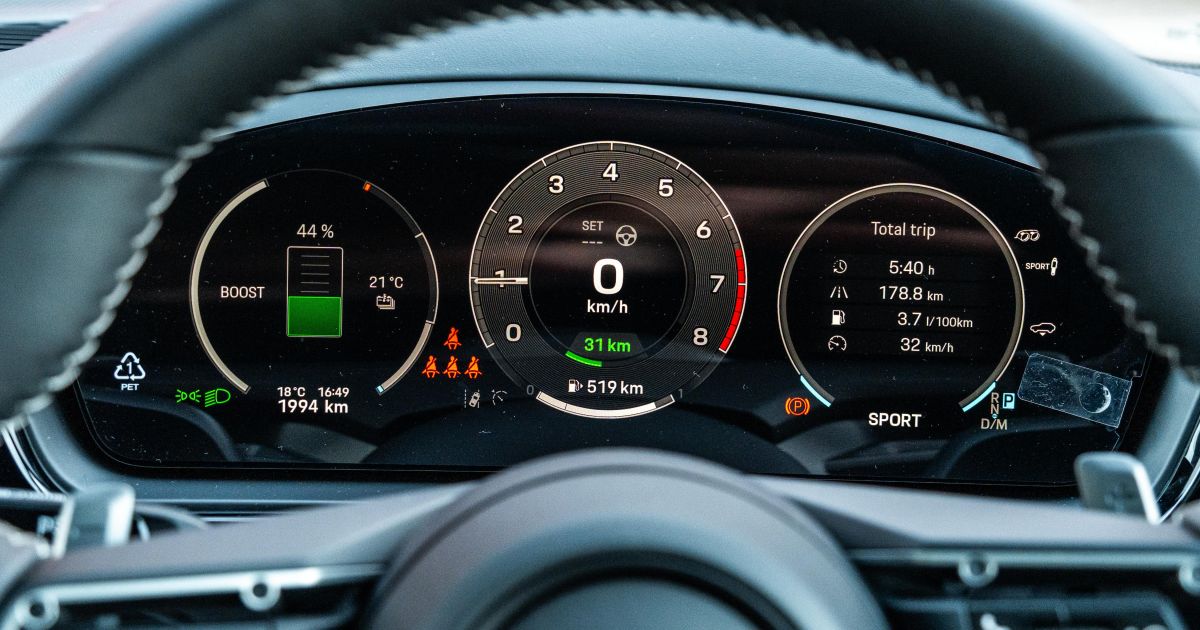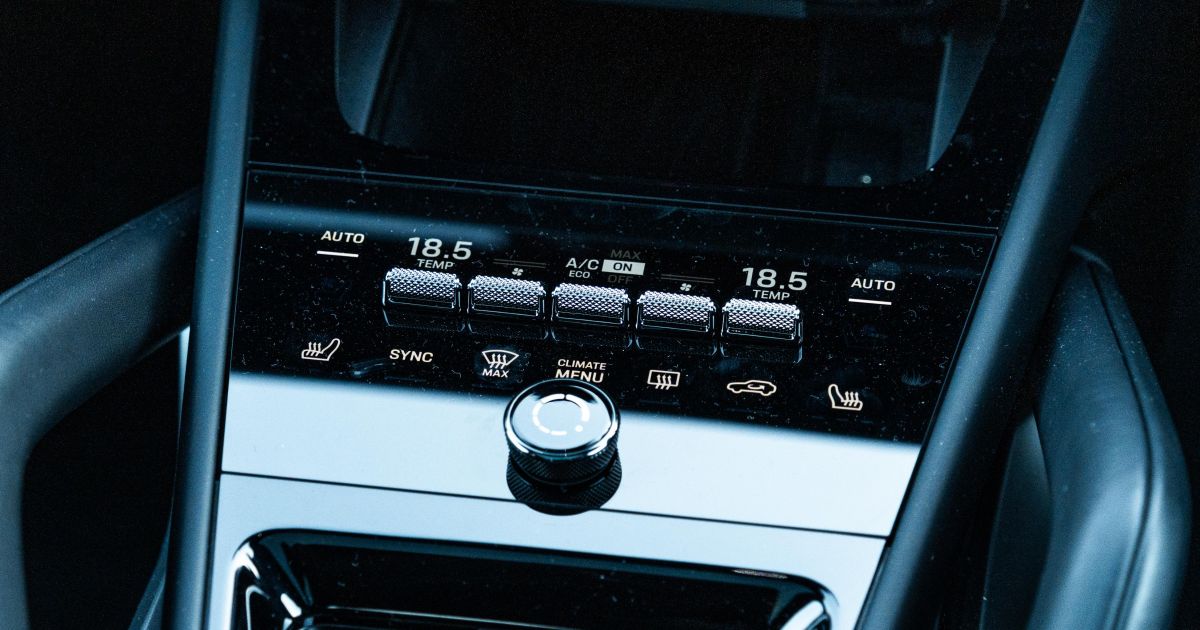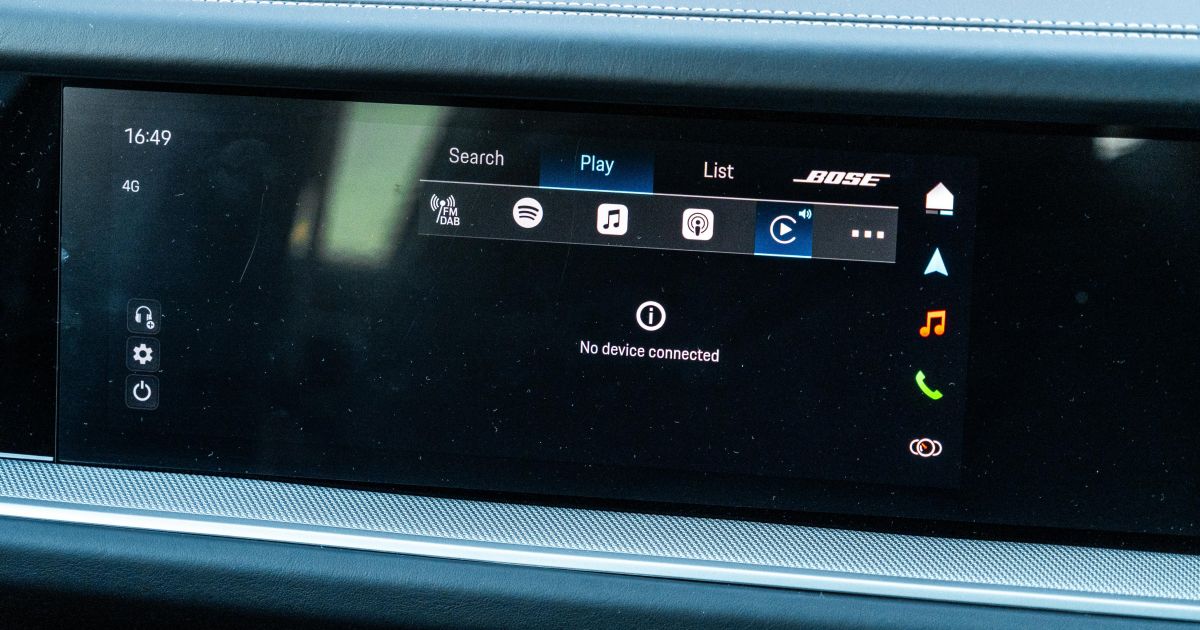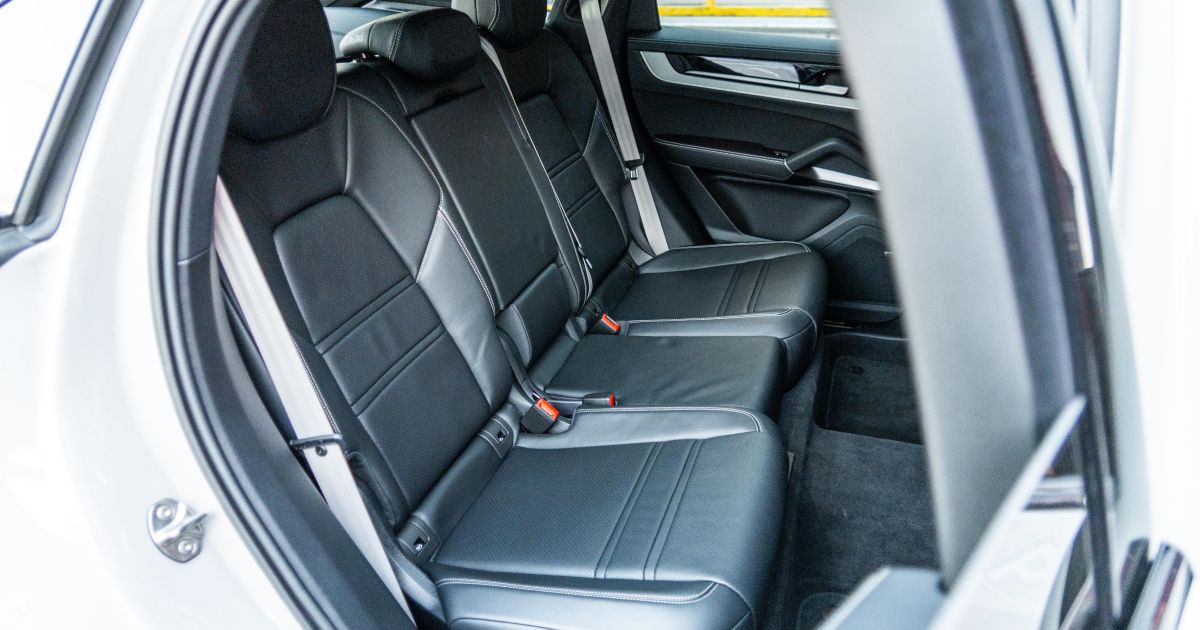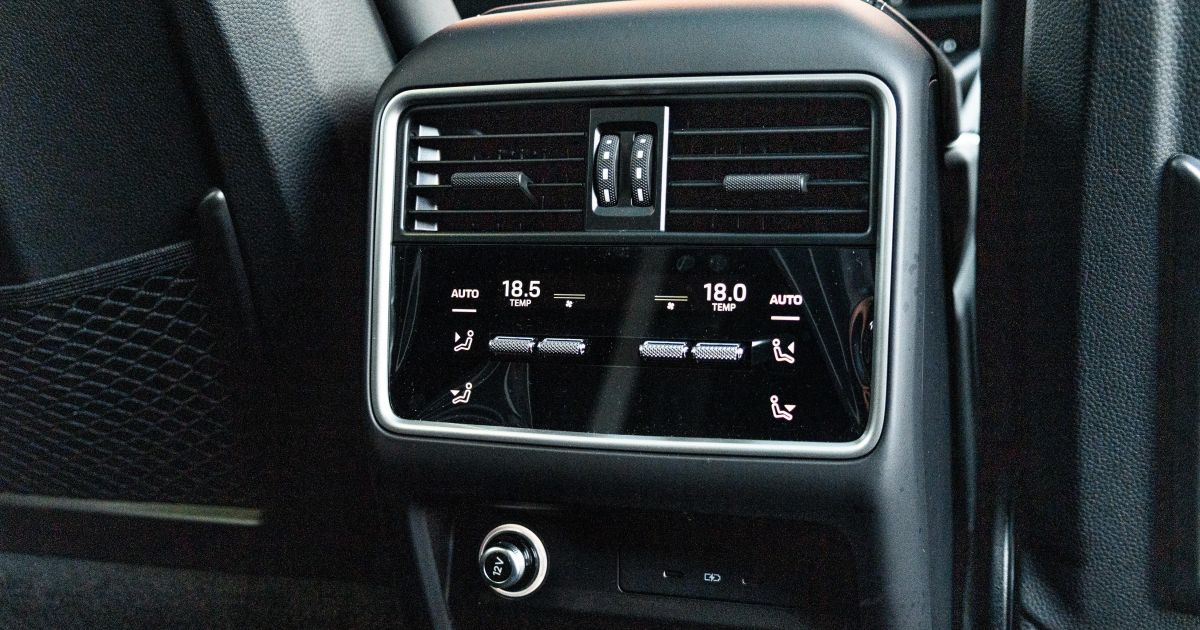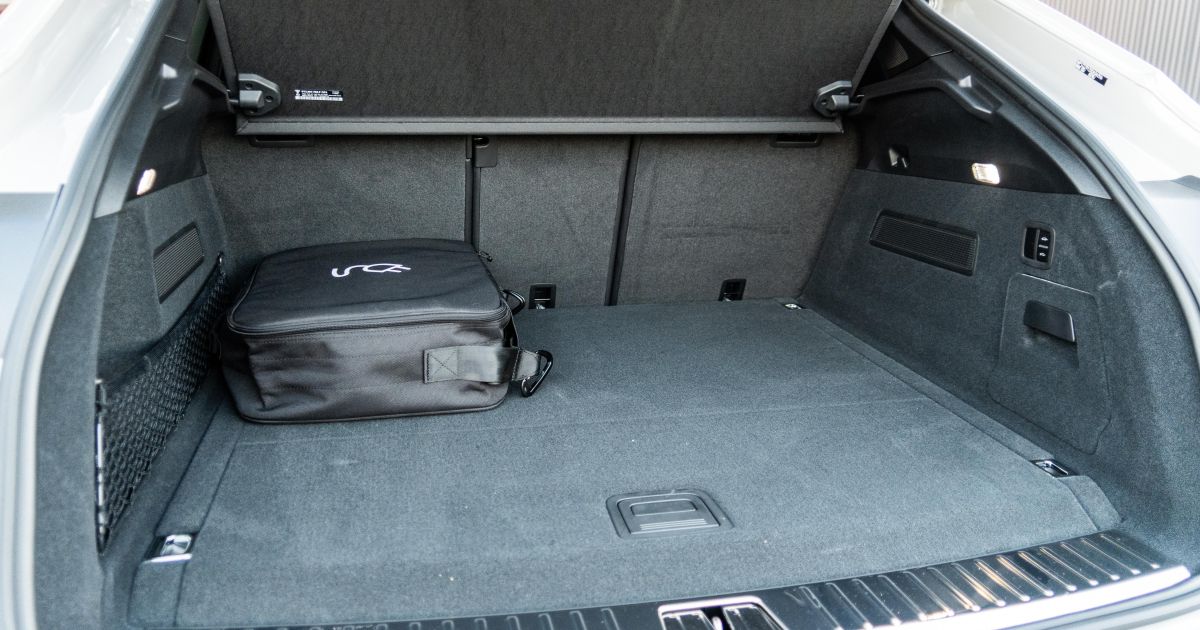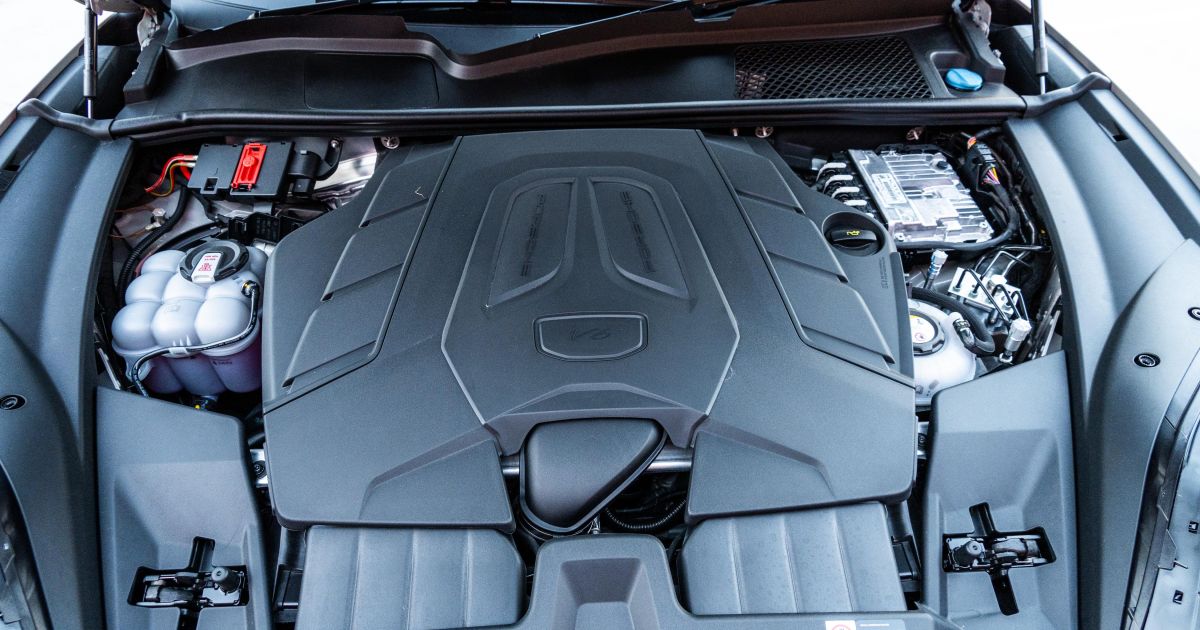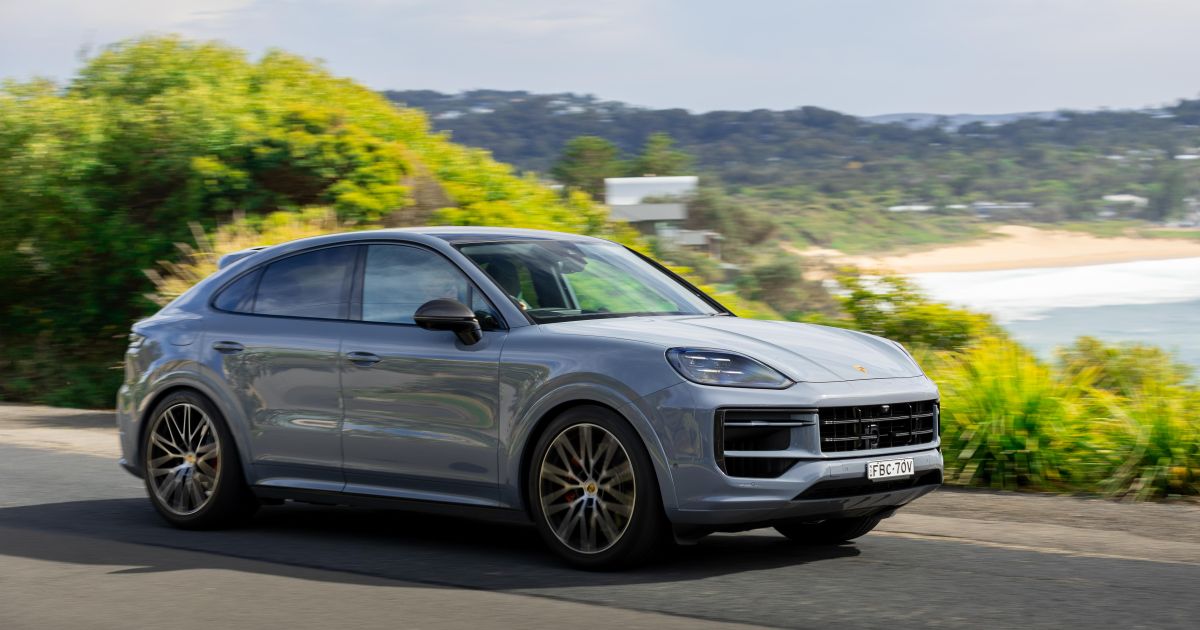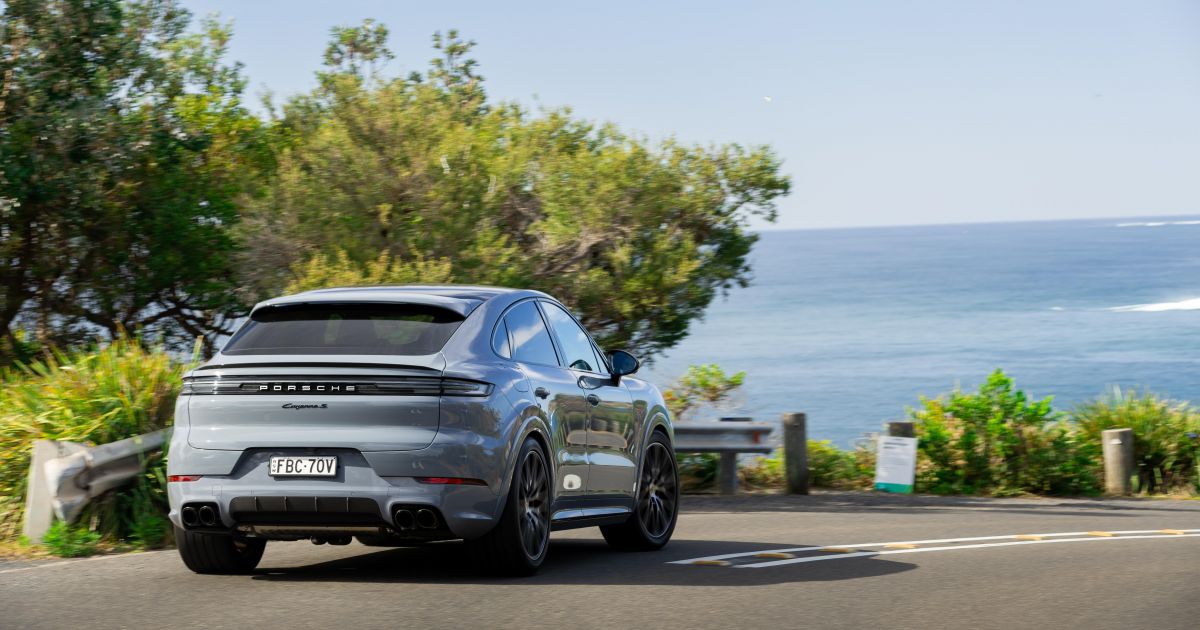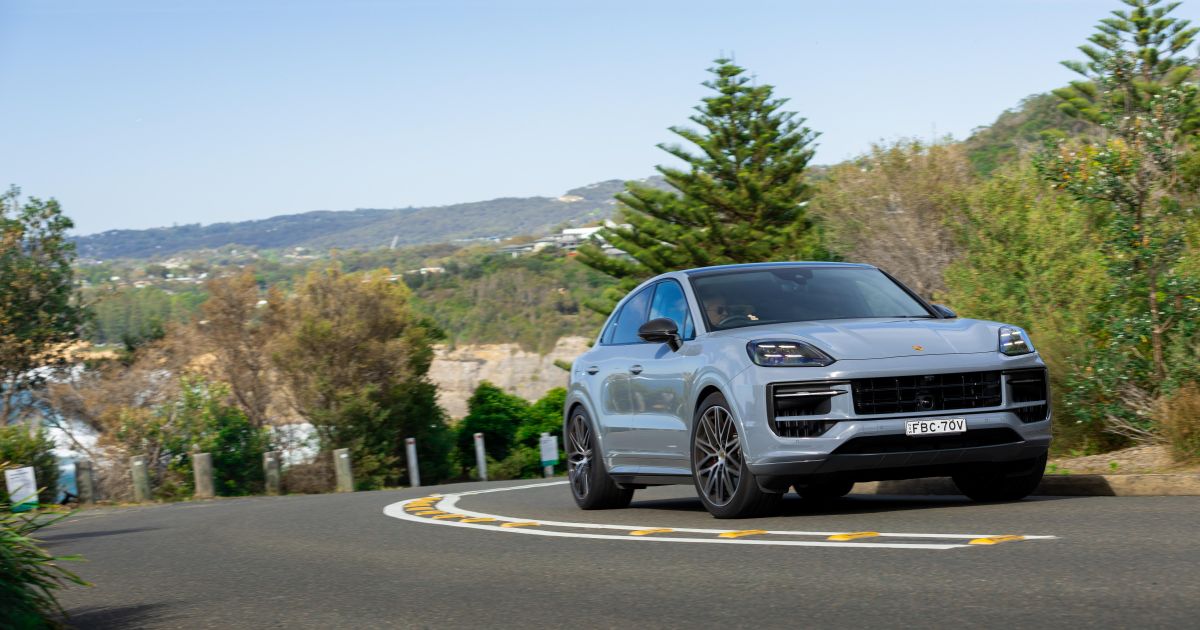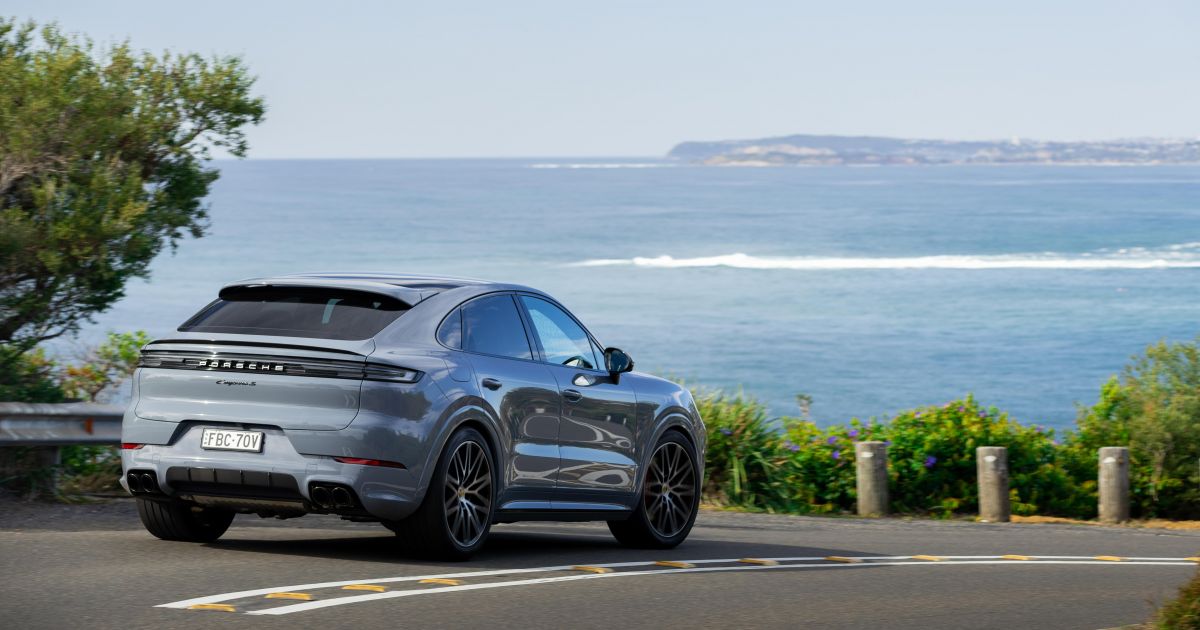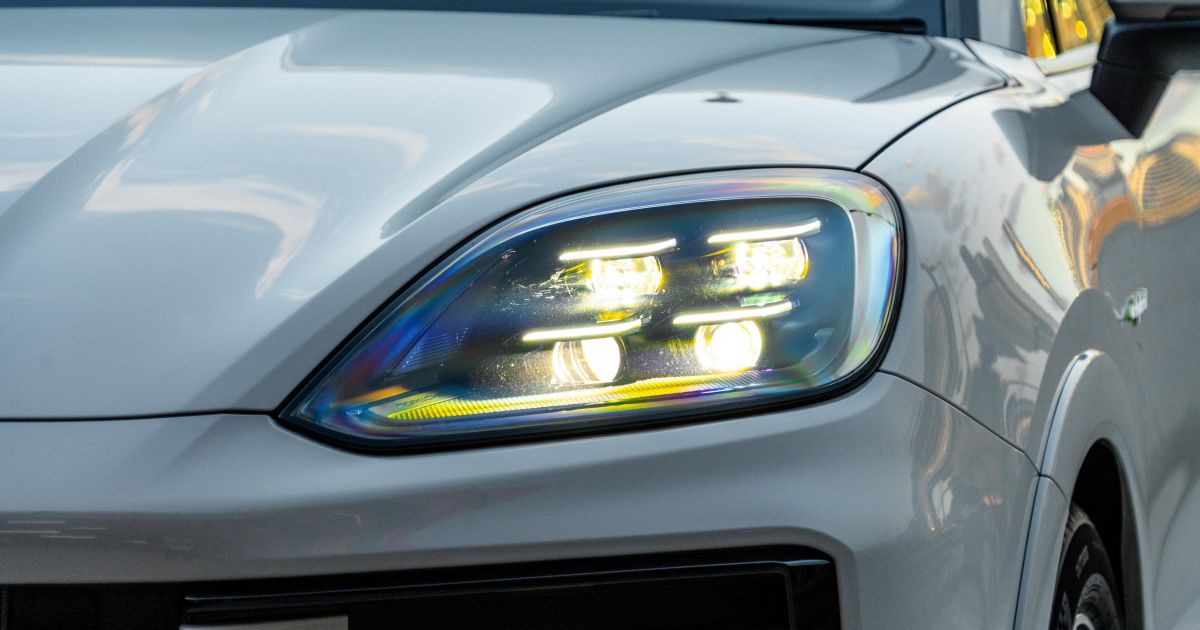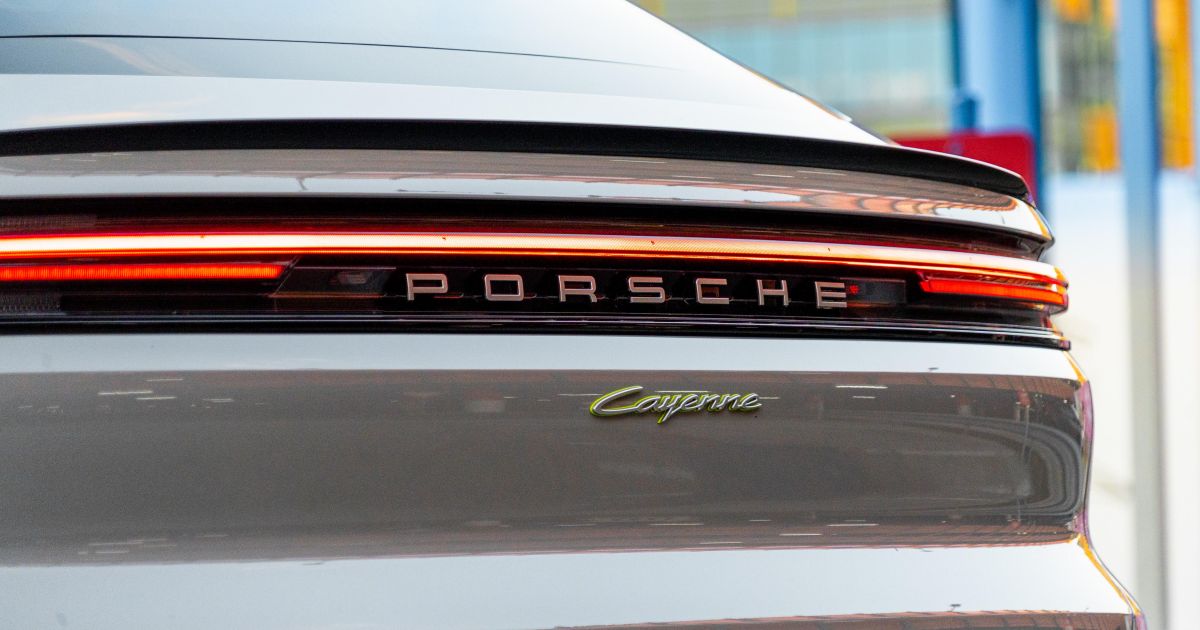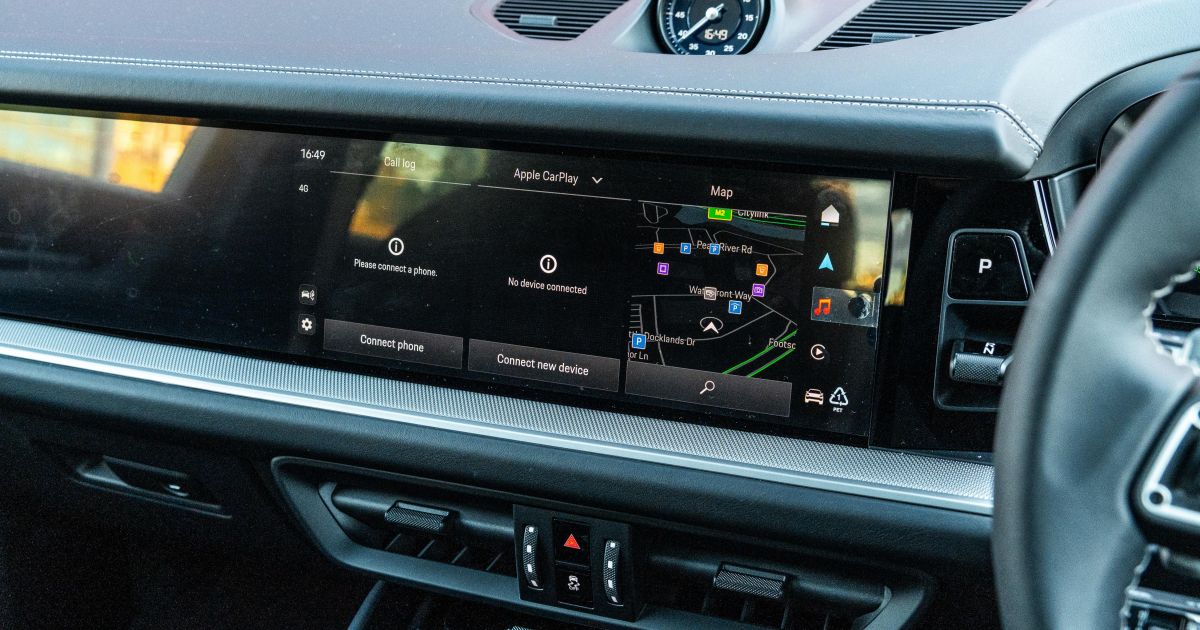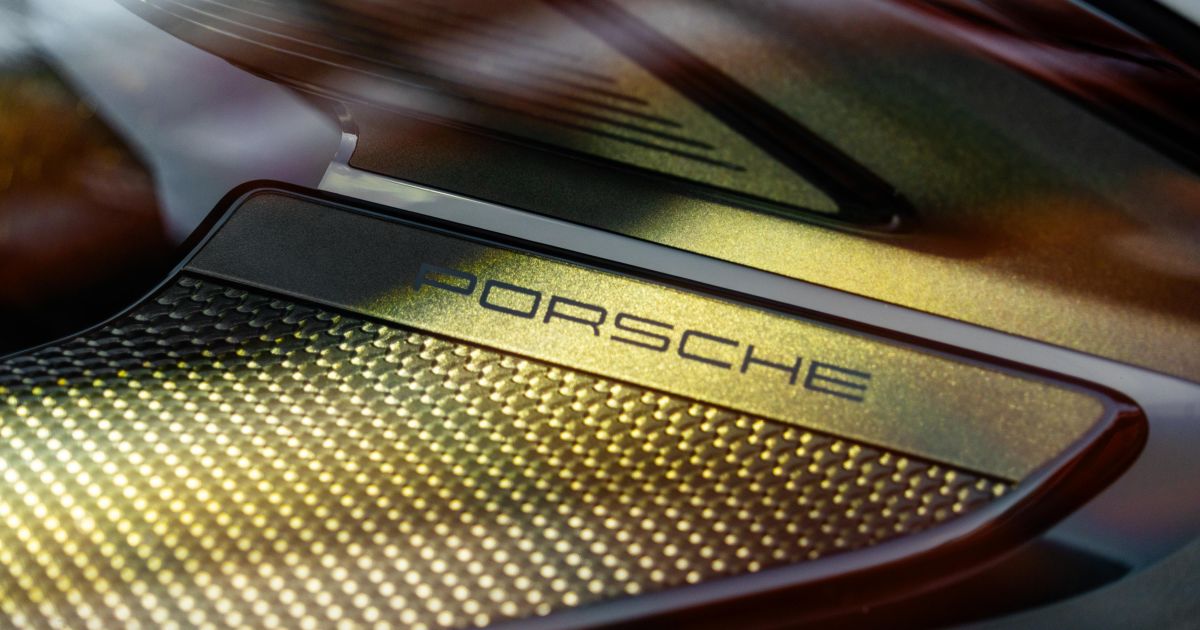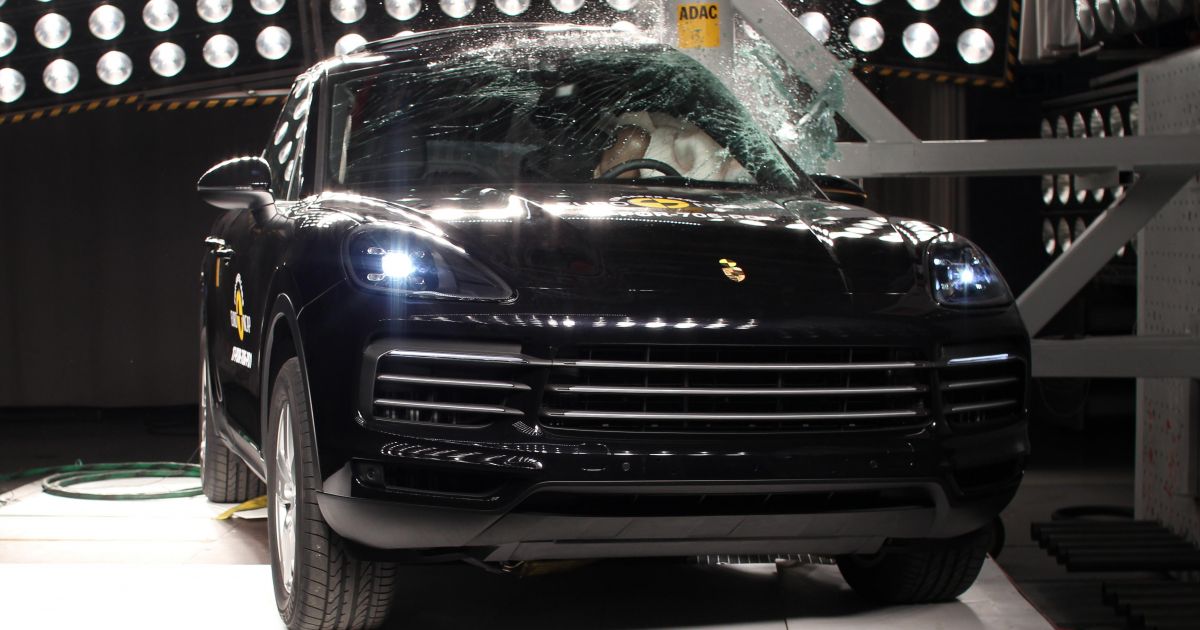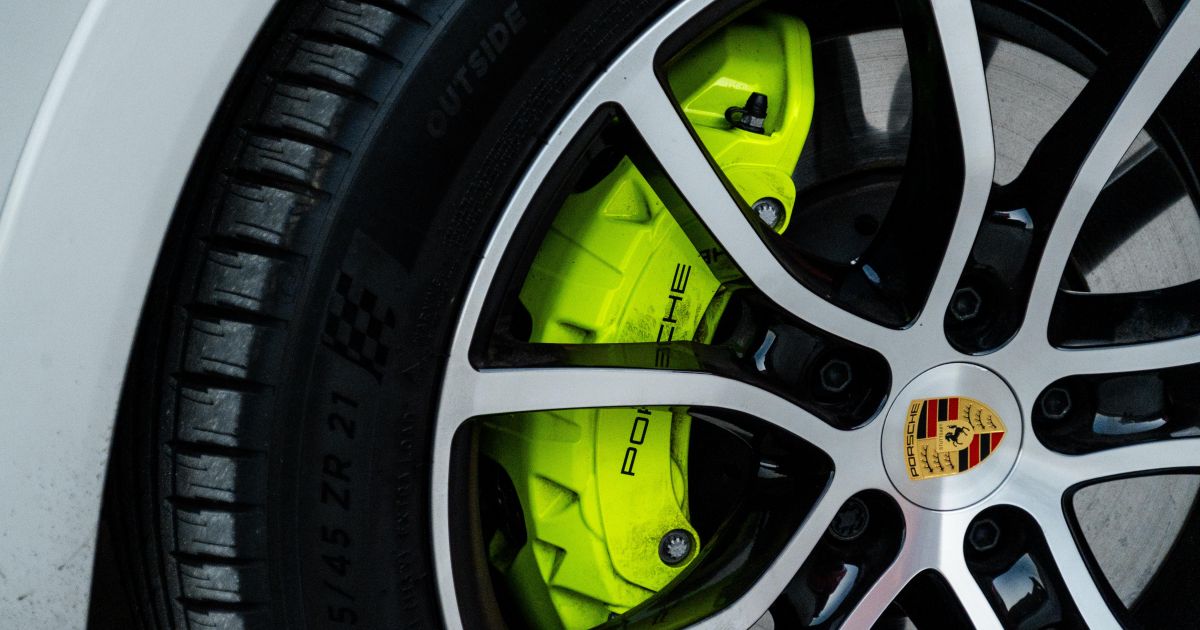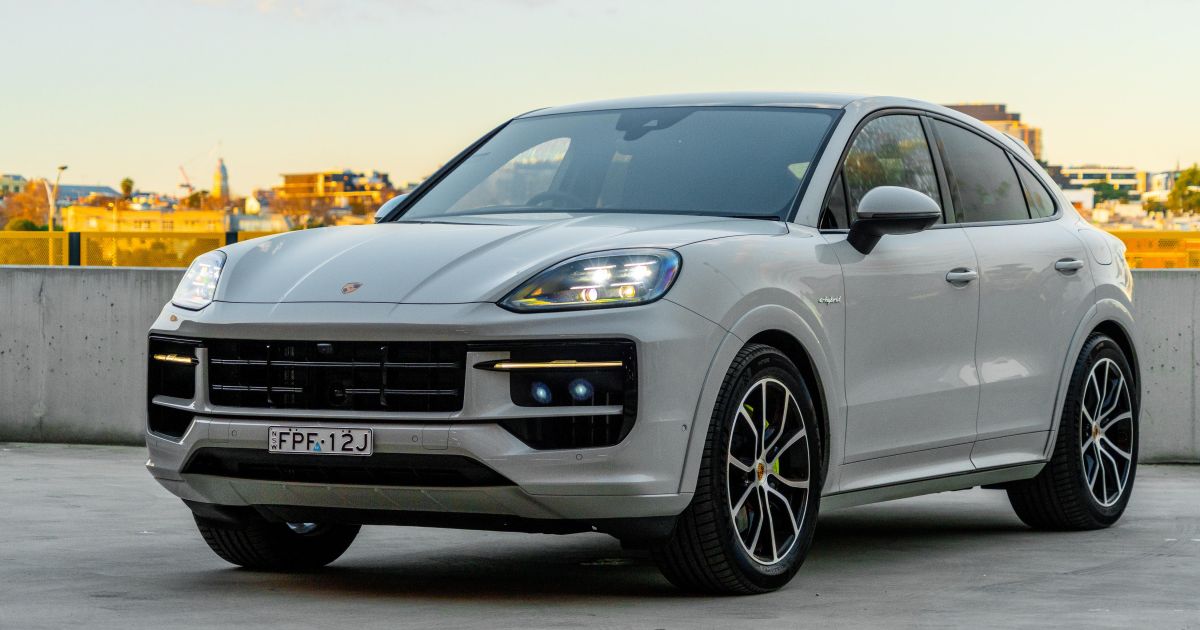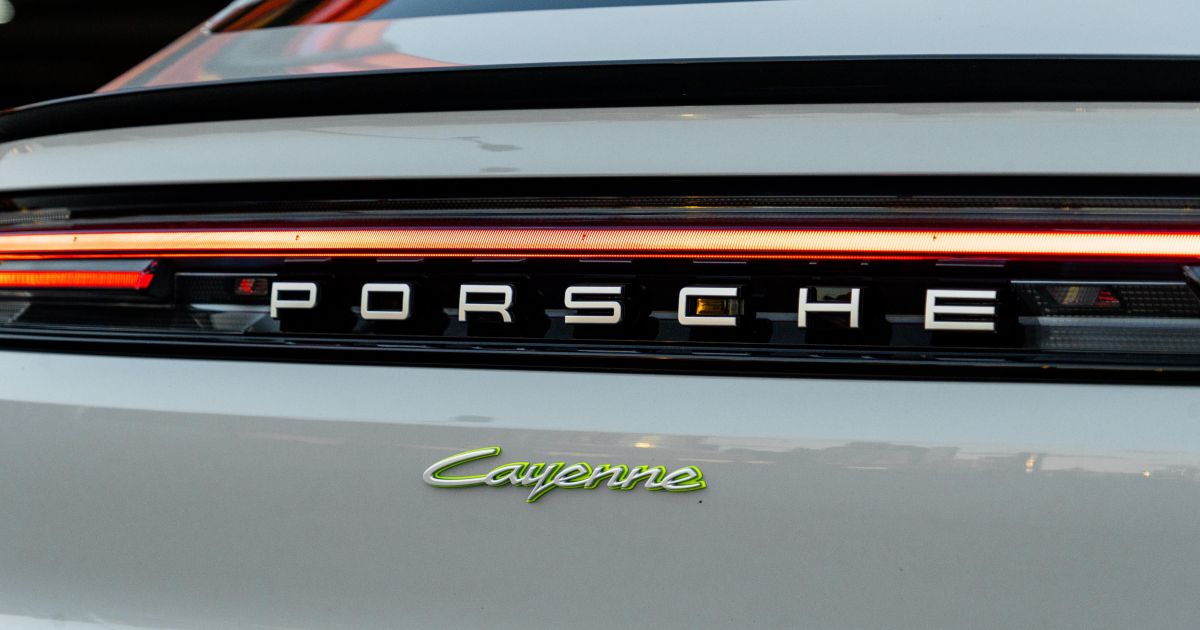Remember when people used to scoff at the idea of a Porsche SUV?
Well since its debut way back in 2002, the Porsche Cayenne has become quite the hot commodity. It quickly became the Stuttgart-based marque’s most popular model globally, before being dethroned temporarily by the smaller Macan SUV, which continues to be the brand’s top-selling in Australia.
It’s now in its third generation, and like its predecessors it continues to share DNA with the likes of the Audi Q7 and Volkswagen Touareg – in addition to the Bentley Bentayga and Lamborghini Urus. It also still offers V6 and V8 engines, including some plug-in hybrid iterations that not only save fuel but boost performance.
While it’s no secret that an all-new, all-electric Porsche Cayenne is on the way, the combustion- and hybrid-powered current generation is set to live on alongside its fourth-generation EV counterpart “up to and beyond 2030”. So, there’s still some life yet in this vehicle.
On test here is the 2025 Porsche Cayenne E-Hybrid Coupe, which combines the most attainable electrified drivetrain with the sleeker and more expensive ‘Coupe’ body style that was introduced for the third-generation Cayenne. Compared to the standard ‘SUV’ or ‘wagon’ version, it has a sloping rear-end treatment that’s more reminiscent of the company’s iconic sports cars.
Watch: Paul’s video review of the Porsche Cayenne S Coupe
This base E-Hybrid variant starts at just over $170,000 in Coupe guise, meaning it’s hardly entry-level in price positioning. Still, it’s less than half the price of the track-ready Turbo GT flagship.
Does this plug-in entry variant represent the best way to own Porsche’s largest SUV? Or should you opt for one with purely petrol power? Or perhaps wait for the all-electric alternative?
How much does the Porsche Cayenne cost?
The E-Hybrid Coupe forms part of the lower echelon of a sprawling range of Cayenne variants – currently, there are no fewer than 19 distinct trim levels across both the SUV and Coupe body styles for model year 2026 (MY26).
| Model | Price before on-road costs |
|---|---|
| Porsche Cayenne | $144,900 |
| Porsche Cayenne Coupe | $153,300 |
| Porsche Cayenne Black Edition | $156,800 |
| Porsche Cayenne Black Edition Coupe | $162,500 |
| Porsche Cayenne E-Hybrid | $164,800 |
| Porsche Cayenne E-Hybrid Coupe | $171,400 |
| Porsche Cayenne E-Hybrid Black Edition | $175,800 |
| Porsche Cayenne E-Hybrid Black Edition Coupe | $180,500 |
| Porsche Cayenne S | $184,900 |
| Porsche Cayenne S E-Hybrid | $187,800 |
| Porsche Cayenne S Coupe | $194,700 |
| Porsche Cayenne S E-Hybrid Coupe | $194,700 |
| Porsche Cayenne S E-Hybrid Black Edition | $195,500 |
| Porsche Cayenne S E-Hybrid Black Edition Coupe | $197,600 |
| Porsche Cayenne GTS | $211,700 |
| Porsche Cayenne GTS Coupe | $214,700 |
| Porsche Cayenne Turbo E-Hybrid | $303,300 |
| Porsche Cayenne Turbo E-Hybrid Coupe | $312,300 |
| Porsche Cayenne Turbo GT Coupe | $376,200 |
To see how the Porsche Cayenne lines up against the competition, check out our comparison tool
What is the Porsche Cayenne like on the inside?
The mid-life refresh of the third-generation Cayenne brought much of the Taycan’s tech suite to Porsche’s combustion-powered range, and I think it works pretty well in the Cayenne.
It’s not a complete departure from previous generations, and remains in keeping with a lot of the German brand’s sports car range. While it’s heavy on digitisation and in-car displays, it’s still quite distinctly Porsche.
The 12.6-inch digital instrument cluster, for example, retains the option to display Porsche’s traditional central tachometer dial – which is replaced by a power meter in this E-Hybrid – flanked by two other virtual dials that can be configured to show everything from a conventional speedometer to navigation and the like.
You can also completely throw out the conventional layout for minimised and map-heavy displays, which means new-age Porsche buyers can choose to go either old-school or new-school. For me, that kind of choice is important.
A lot of the switchgear has been migrated to either clicky toggles or touch-capacitive shortcuts. While they’re all quite tactile, the glossy bank of largely virtual buttons on the centre tunnel is fingerprint central.
Same goes for the 12.3-inch central infotainment touchscreen and the optional 10.9-inch passenger-side multimedia display ($2990), which are both nicely integrated into the dashboard but can quickly become covered in fingerprints and smudges.
Ignoring the smudgy surfaces, the Porsche Communication Management (PCM) interface that supports these displays is pretty clean and snappy, if a little less showy than some of the big screens and features available in rivals.
The software is generally quick to respond, offering clear graphics with fluid animations. The letterbox aspect ratio means the far-side of the display can require a bit of reach from the driver, and the low-set climate controls do require a glance away from the road if you need to change temperature or activate recirculated air on the move.
Wireless Apple CarPlay worked well during our time with the vehicle, and there’s also embedded satellite navigation with live traffic updates and routing, as well as DAB+ digital radio should you prefer to use those functions rather than an extension of your smartphone software.
One thing I noticed is that the button to activate the optional sports exhaust system is embedded in the touchscreen rather than on the centre console like in previous iterations, which is annoying. I’d also argue the passenger display is more of a redundant gimmick than a must-have option – unless your driving partner insists on streaming videos on regular road trips, for example.
Comfort up front is very good, thanks to heavily sculpted and supportive sports seats that hug you from every angle, and hark back to the brand’s sports cars. Standard electric adjustment means you can easily find the perfect driving position, and standard driver’s seat memory presets in the Coupe allows you to save positions for two drivers.
Despite the sloping ‘coupe’ roofline, the more design-focused Porsche Cayenne still has good rear occupant accommodation for families, offering good head and leg room for the six-footers of the world – like 6’1″ me.
Porsche has really sculpted out the two outboard rear seats to almost ape the front buckets, so much so that middle rear seat occupants might feel a little short-changed. Unlike its seven-seat Q7 platform mate, the Cayenne remains strictly a five-seater and indeed it’s best described as a ‘4+1’ – you can actually delete the centre rear seat if you want.
| Dimensions | Porsche Cayenne E-Hybrid Coupe |
|---|---|
| Length | 4930mm |
| Width | 1997mm |
| Height | 1656mm – incl. air suspension |
| Wheelbase | 2895mm |
| Cargo capacity | 404-1344L |
To see how the Porsche Cayenne lines up against the competition, check out our comparison tool
What’s under the bonnet?
The Porsche Cayenne E-Hybrid Coupe is powered by a turbocharged 3.0-litre petrol V6-based plug-in hybrid system that now brings a larger 25.9kWh battery pack as part of the mid-life refresh.
| Specifications | Porsche Cayenne E-Hybrid |
|---|---|
| Engine | 3.0L V6 turbo-petrol PHEV |
| Engine outputs | 224kW / 420Nm |
| Electric motor outputs | 130kW / 460Nm |
| System outputs | 346kW / 650Nm |
| Battery | 25.9kWh li-ion – gross |
| Transmission | 8-speed auto |
| Drive type | All-wheel drive |
| Weight | 2455-2530kg – DIN-EU |
| 0-100km/h (claimed) | 4.9s – with Sport Chrono Package |
| Fuel economy (claimed) | 1.9L/100km |
| Fuel economy (as tested) | 4.1L/100km |
| Electric driving range (PHEV) | 86km – ADR 81/02 |
| Fuel tank capacity | 75 litres |
| Fuel requirement | 95-octane premium unleaded |
| CO2 emissions | 44g/km |
| Emissions standard | Euro 6 |
| Braked tow capacity | 3500kg |
To see how the Porsche Cayenne lines up against the competition, check out our comparison tool
How does the Porsche Cayenne drive?
While a big, hybrid SUV doesn’t necessarily sound very Porsche-like, I’m of the belief that the E-Hybrid range of powertrains really suits the Cayenne’s intended purpose and demographic.
Pictured: Porsche Cayenne S Coupe
The bigger 25.9kWh battery means there’s plenty of electric driving range for most daily commuting, though I reckon you’d struggle to match Porsche’s EV-only claim of 86km given the vehicle’s indicated power consumption often sits around 30-40kWh/100km.
Our trip computer-indicated average of 36.4kWh/100km after our time with the Cayenne E-Hybrid Coupe indicates a real-world driving range closer to the 70km mark, and we covered 211 out of 277km on e-power alone.
The electric motor’s 130kW power output might seem meek in a large SUV that weighs in at 2.5 tonnes, but its almost instantaneously delivered 460Nm of torque offers effortless shove, particularly around town or while navigating traffic jams.
It’s also wonderfully quiet, although there’s the odd shift in lower gears of the eight-speed auto in E-Drive mode that can be a little elastic.
If you punt it hard the 3.0-litre V6 will fire to life and give you the full 346kW and 650Nm, and thanks to the optional sports exhaust on our test car it sounds rather brassy and purposeful when it does.
The Cayenne E-Hybrid is too heavy and high off the ground to feel like a 911, but combined with the gorgeous steering tune, which balances excellent feel and directness with mid-level weighting that can be adjusted with the drive modes, it definitely feels like a powerful GT that offers communicative and engaging driver controls.
The as-tested optional adaptive air suspension including active damping adds to the layers of adjustability, and also allows you to raise and lower the ride height based on drive mode or personal preference. Even on 21-inch alloys, it rides quite well despite leaning towards more sporting aspirations.
Because it’s so connected in feel and responsive to inputs, the Cayenne Coupe doesn’t feel as big as it looks and actually is. It turns in keenly, controls its weight through corners well, and feels like it’s eager to push on in more spirited driving.
At full noise there’s immediate torque response from the electric motor, and as the revs climb, the petrol V6 sings a brassy tune. I personally found it quite addictive given the other otherwise silent commuting character of this powertrain.
Flicking the rotary mode selector on the steering wheel to Sport and Sport Plus really tightens things up and dials up the intensity to 9 and 11 respectively. Remember, this is basically the same drivetrain used in the Volkswagen Touareg R.
That said, you can feel the drivetrain’s shove start to taper off as you hit Australia’s national highway speed limit, thanks to the combination of its significant mass and the drivetrain’s combined outputs arriving in at a narrow band. Keep in mind the petrol engine ‘only’ makes 224kW on its own.
But of course this is merely the entry-level E-Hybrid, and there’s no such issue in the Cayenne Turbo E-Hybrid with its truly bonkers 544kW/950Nm twin-turbo V8 plug-in hybrid system – in which 441kW/800Nm comes from the petrol engine alone.
Another aspect of the Cayenne’s dialled-in feel from the driver’s seat comes with the very well-calibrated driver assistance technologies.
Standard adaptive cruise control and lane centring assists allow the Cayenne to take over the heavy lifting during longer highway stints, and to navigate low-speed traffic jams.
Blind-spot monitoring and rear cross-traffic alert are helpful given the tapered rear roofline and thick rear pillars, while the surround parking camera helps with tighter manoeuvres in shopping centre car parks, where this SUV will no doubt spend a lot of time.
To see how the Porsche Cayenne lines up against the competition, check out our comparison tool
What do you get?
Porsche Cars Australia tends to go over and above standard global specifications, and the Cayenne is no different. Below is a list of the local equipment highlights.
2025 Porsche Cayenne Australian equipment highlights:
- 20-inch collapsible spare tyre – non-E-Hybrid models
- 21-inch RS Spyder Design wheels – Cayenne S Coupé and S E-Hybrid Coupé
- 22-inch 911 Turbo Design wheels – Cayenne Turbo E-Hybrid Coupé
- Metallic paint – Cayenne S and up
- Panoramic roof system – Cayenne S SUV and up
- Porsche Entry – Comfort access
- Privacy glass
- Adaptive air suspension incl. PASM – Cayenne S
- Porsche Dynamic Chassis Control (PDCC) – Cayenne Turbo E-Hybrid
- Power steering plus
- Head-Up Display
- Driver memory package – Cayenne Coupé, Cayenne GTS SUV
- Front seat ventilation – Cayenne S SUV
- Side airbags in the rear compartment
- 4-zone climate control – Cayenne Turbo E-Hybrid, Cayenne Turbo GT
- Soft close doors – Cayenne GTS and up
- 14-way Comfort seats including memory package – Cayenne SUV and up, $NCO on other models
- 18-way Adaptive sport seats including memory package – $NCO on Cayenne Turbo GT
- Bose Surround Sound System – Cayenne S and Cayenne S E-Hybrid
- Digital radio
To see how the Porsche Cayenne lines up against the competition, check out our comparison tool
Options
Being a Porsche, the Cayenne can be optioned and personalised within an inch of its life.
Options fitted to our test vehicle include:
- Legends paint – Crayon: $7370
- 21-inch Cayenne Exclusive Design wheels in Black:$8380
- Leather interior Black, smooth-finish: $6920
- Adaptive sports seats in front – 18-way, electric: $800
- SportDesign package painted in Black high-gloss: $9600
- Trailer hitch without tow ball: $1970
- Tinted HD-Matrix LED headlights: $5720
- Tinted LED headlights including light strip: $2000
- Decorative stitching in contrasting colour – Crayon: $7250
- Accent package in Silvershade: $1140
- Porsche crest on headrests: $1000
- Seatbelts in Crayon: $1020
- Heated GT sports steering wheel: $1140
- Bespoke door sill guards in brushed Aluminium in Black – illuminated: $4370
- Adaptive air suspension with Porsche Active Suspension Management: $4750
- Sports exhaust system incl. sports tailpipes in Silver: $5970
- 4-zone automatic climate control: $1720
- Preparation Porsche Dashcam – front and rear: $250
- Passenger display: $2990
Price for optional equipment: $74,360
To see how the Porsche Cayenne lines up against the competition, check out our comparison tool
Is the Porsche Cayenne safe?
The Porsche Cayenne range doesn’t have an ANCAP safety rating, though the pre-facelift range earned a five-star Euro NCAP score based on 2017 testing.
Standard safety features include:
- Warning and Brake Assist (AEB)
- Vehicle-to-vehicle
- Pedestrian, Cyclist detection
- Intersection Assist
- Active Parking Assistance
- Adaptive cruise control incl. stop and go
- Driver Awareness Detection
- Emergency Assist
- Exit warning
- Lane keep assist incl. centring
- Lane Change Assist – blind-spot monitor
- Rear cross-traffic alert
- Self-steering Park Assist
- Surround cameras
- Trailer Maneuvering Support
To see how the Porsche Cayenne lines up against the competition, check out our comparison tool
How much does the Porsche Cayenne cost to run?
Porsche Cars Australia persists with a three year, unlimited kilometre warranty, which is falling behind the pack. The high-voltage battery in PHEV and EV vehicles is warranted for eight years or 160,000km, however.
| Servicing and Warranty | Porsche Cayenne E-Hybrid |
|---|---|
| Warranty | 3 years, unlimited kilometres |
| Roadside assistance | 3 years then service activated |
| Service intervals | 12 months or 15,000 kilometres |
| Capped-price servicing | – |
| Total capped-price service cost | – |
Worth noting is that the Audi Q8 60 TFSI e and Volkswagen Touareg R, which use versions of the same V6 plug-in hybrid drivetrain, both offer longer warranties and capped-price service programs.
To see how the Porsche Cayenne lines up against the competition, check out our comparison tool
CarExpert’s Take on the Porsche Cayenne
The base E-Hybrid grade might not be cayenne pepper-hot, but the most attainable electrified Porsche Cayenne Coupe makes a lot of sense for its target audience.
It offers more performance and efficiency compared to the base petrol V6 variant, while retaining the desirable Porsche look and feel that helps set it apart from related models from the likes of Audi and Volkswagen. It may not have the shove and drama of the V8s, but as an ideal luxury family bus it’s more suitable to more people more of the time.
No, the ‘Porsche of SUVs’ tag doesn’t mean it drives like a big 911, but the beautifully tuned chassis and driver controls are balanced in a combination that few rivals manage to achieve. And the hallowed Porsche crest on the nose no doubt counts for plenty as well.
Of course, all this doesn’t come cheap, even relative to other German-badged rivals and some of the Cayenne’s own platform mates, but with plenty of justification the Porsche brand does sit somewhere between traditional premium automakers and high-end luxury marques – and the Cayenne is no different in that regard.
Personally, I don’t think the ‘coupe’ body is worth about $7000 more than the standard SUV, but I can understand why the Cayenne Coupe will appeal more to traditional Porsche buyers or those wanting a more traditional (read: sports car-like) Porsche-like shape. This is far from an affordable large SUV, especially when it’s fitted with $75,000 worth of options like this press car is, but even in standard form it’s one of the finest.
CarExpert can save you thousands on a new Porsche Cayenne. Click here to get a great deal.
Click the images for the full gallery

